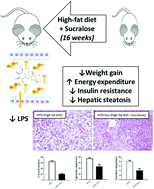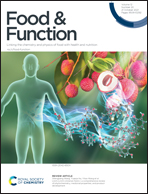Effects of long-term consumption of sucralose associated with high-fat diet in male mice
Abstract
Sucralose is a widely consumed non-nutritive sweetener (NNS). Studies have shown that some NNS can favor weight gain by altering the intestinal microbiota, satiety hormone production, or aspects related to glucose homeostasis. In this study, we investigated the effects of ad libitum sucralose consumption in mice fed with normal or high-fat diet (HFD) for an extended period (16 weeks). Weight gain, final body composition, energy expenditure, intestinal and pancreatic hormone production, and endotoxemia during a voracity test, as well as liver and skeletal muscles were evaluated after 16 weeks. We observed that sucralose supplementation reduced weight gain in HFD-fed mice but did not change weight gain in mice fed with normal diet. The evaluation of HFD mice showed that sucralose supplementation resulted in improvements in glycemic homeostasis, hepatic steatosis, and increased energy expenditure. Our results suggest that sucralose consumption promotes different outcomes in relation to weight gain when combined with different diets, which may explain the controversial data in previous studies, and can be considered in future clinical research aimed at clarifying the impact of NNS consumption on human health.



 Please wait while we load your content...
Please wait while we load your content...